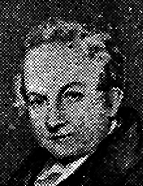

Passive bibliography: BRANCO, Manuel Bernardes. Portugal e os Estrangeiros . Vol. I. Lisbon, Livraria de A. M. Pereira, 1879, pp. 12-16; DIBDIN, Thomas Frognall, A Bibliographical, Antiquarian and Picturesque Tour in the Northern Counties of England and in Scotland , 3 vols. London. s.l., 1838, vol I, pp. 347-400; ESTORNINHO, Carlos. “O Culto de Camões em Inglaterra.” Arquivo de Bibliografia Portuguesa . Ano VI, no. 23-24 (1955): pp. 7-8, 12-13, 22; ESTORNINHO, Carlos, “Letters from British Correspondents to Almeida Garrett”. Annual Report and Review of the Historical Association, Portugal Branch, 12th Annual Report and Review , Lisbon, s.n., 1954, 712-723; PALLISTER, George, John Adamson 1787-1855, An Eminent Novocastrian . Newcastle-upon-Tyne, J. Holmes and Co., n.d.; RAITT, Lia Noémia Rodrigues Correia, Garrett and the English Muse . London, Tamesis Books, 1983. 2, 9-10, 12-13; PEQUITO, João Martins Gomes, “John Adamson (Lusófilo e Camonianista do Século XIX)”. Original Master's dissertation in Germanic Philology, presented to the Faculty of Arts and Humanities of the University of Coimbra, 1959; SILVA, Inocêncio Francisco da, Diccionario Bibliographico Portuguez […]. Lisbon, Imprensa Nacional, 1886, Tomo XIV, 7º do Suplemento, pp. 235-240, 246-247, 373, 375; SILVA, João Paulo Ascenso Pereira da, Memórias de Portugal, A Obra Lusófila de John Adamson. Lisbon and Ponta Delgada, Eurosigno, 1990; SILVA, João Paulo
A. P., “John Adamson e o Mito Romântico de Camões”. SOUSA, Maria Leonor Machado de (coord.), Camões em Inglaterra . Lisbon, ICALP / Portuguese Ministry of Education, 1992, pp. 159-187; SILVA, João Paulo A. P., “‘History of Portugal’ e ‘Memoranda Lusitanica’ – Uma Visão Romântica da História Portuguesa nas Páginas de The Monthly Mirror ”. SILVA, Jorge Bastos da, CASTANHEIRA, Zulmira (orgs.), Entre Classicismo e Romantismo, Ensaios de Cultura e Literatura . Porto, FLUP/CETAPS, “Studies in Classicism and Romanticism”, nº 2, 2013, pp. 107-125. Available at:
This work is financed by national funds through FCT - Foundation for Science and Technology, I.P, in the scope of the projects UIDB/04311/2020 and UIDP/04311/2020.
